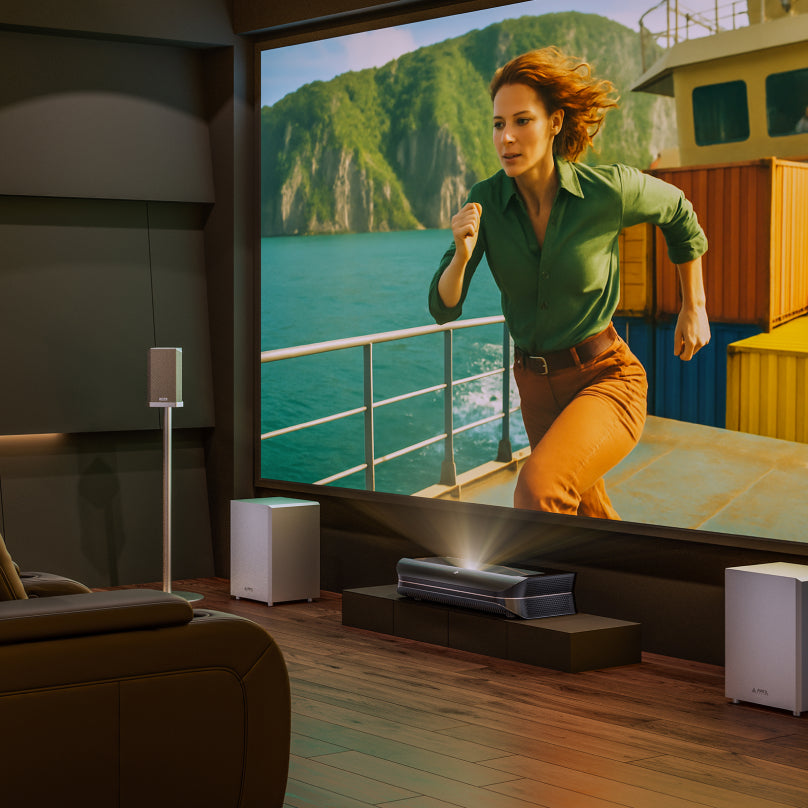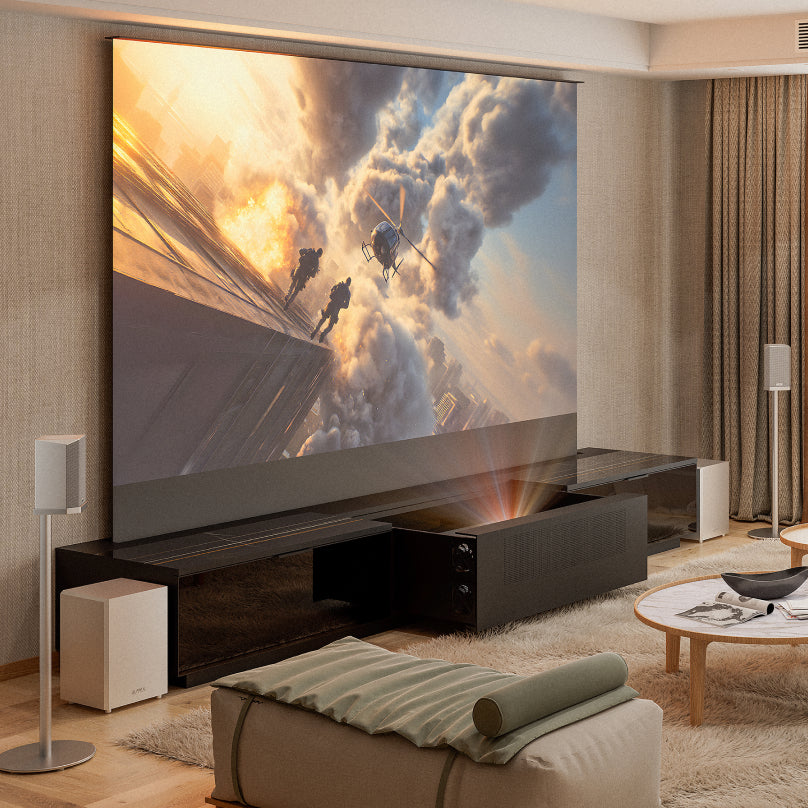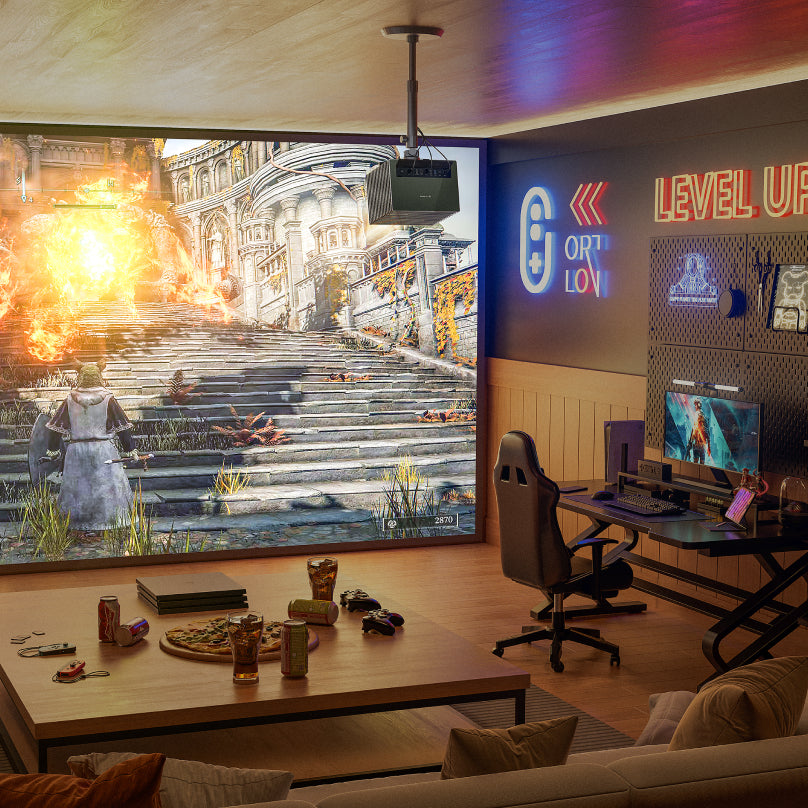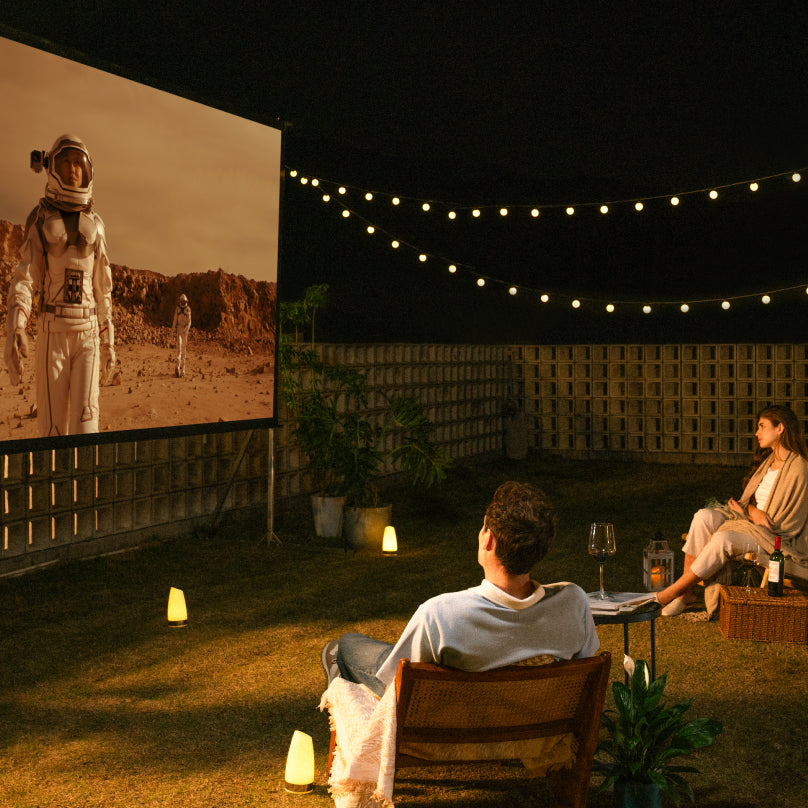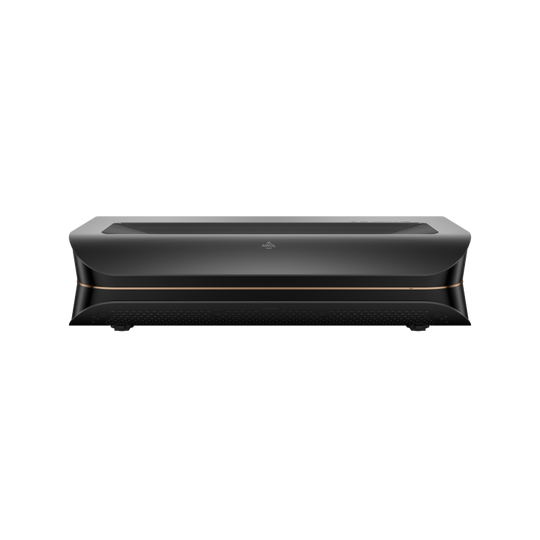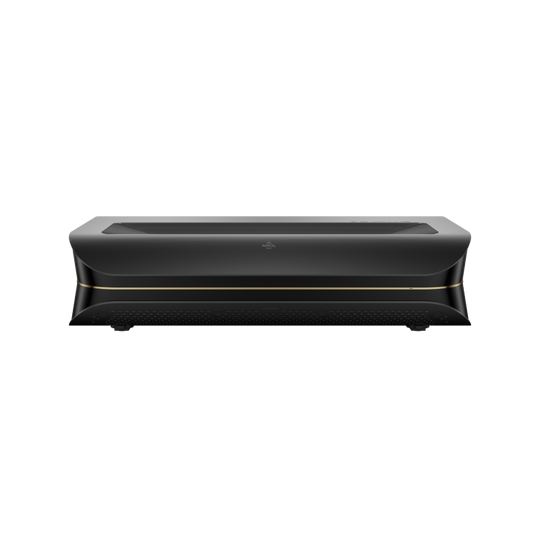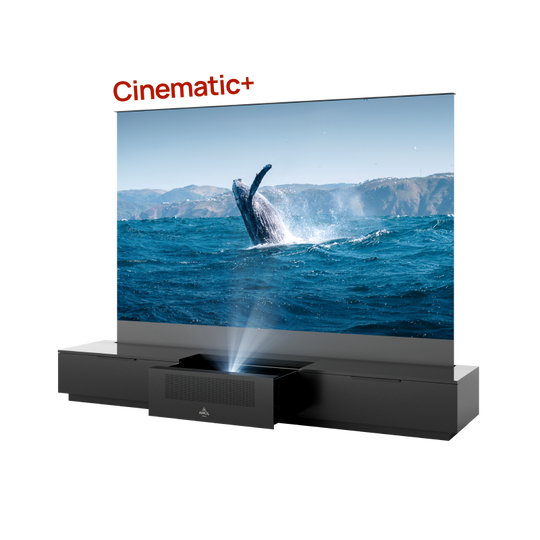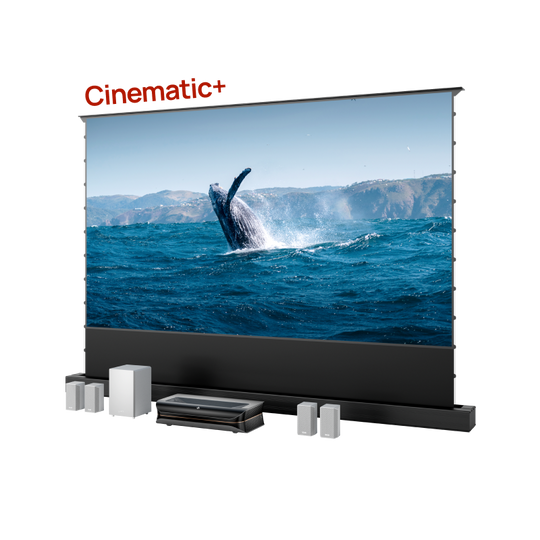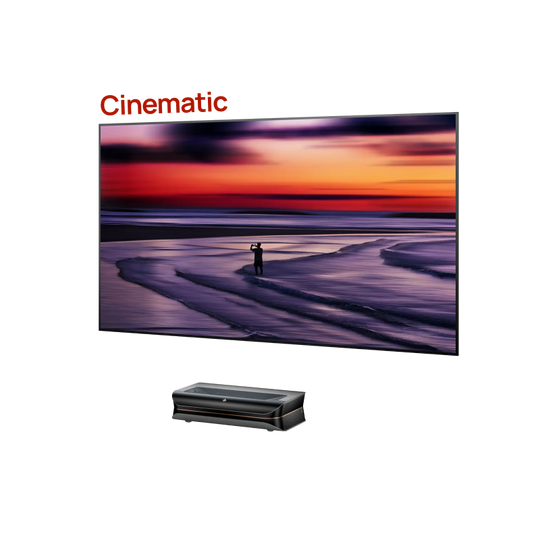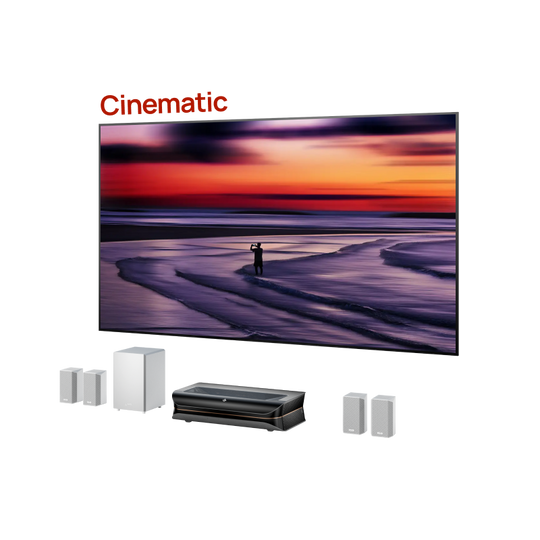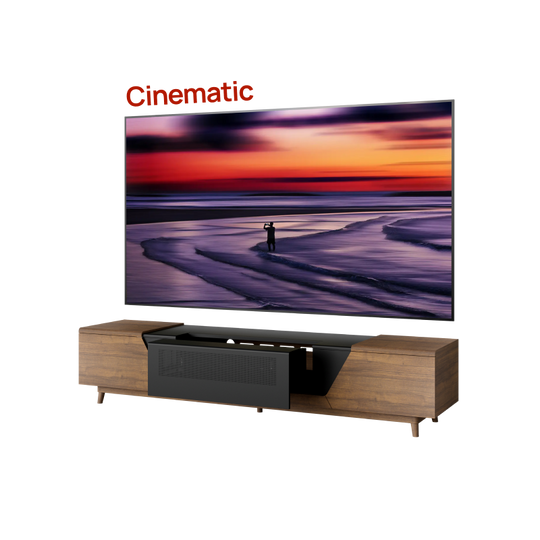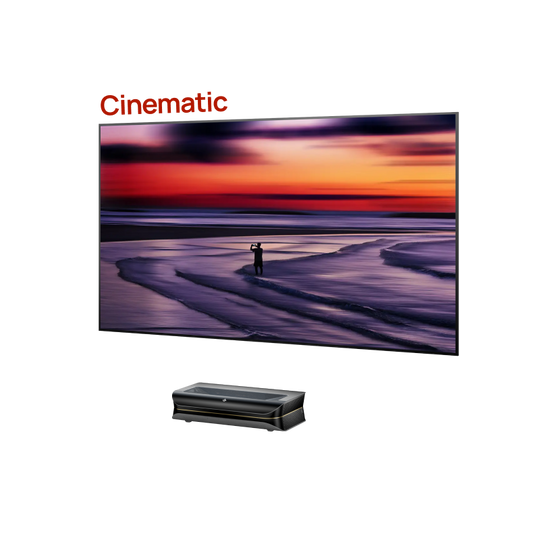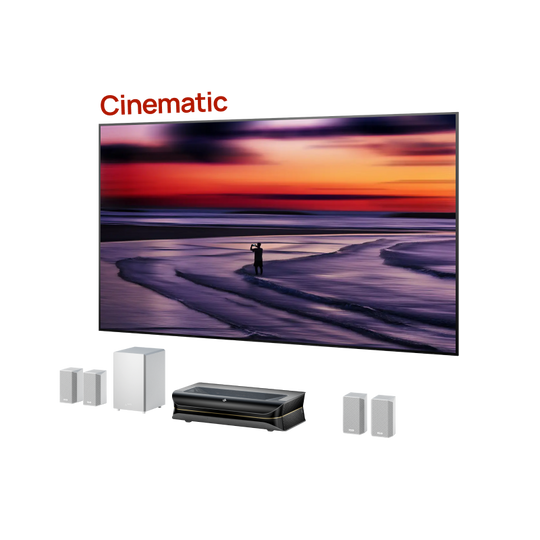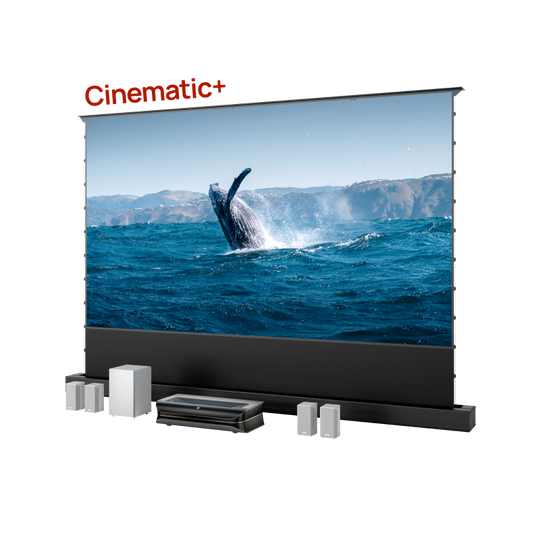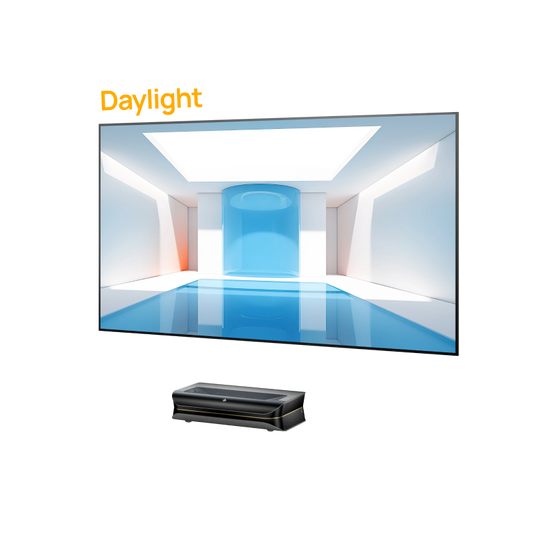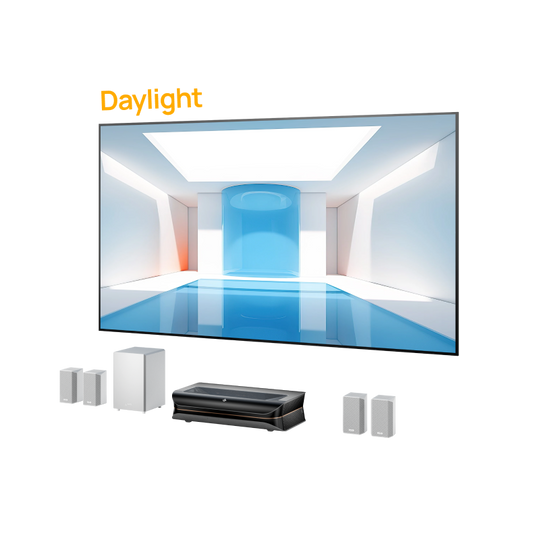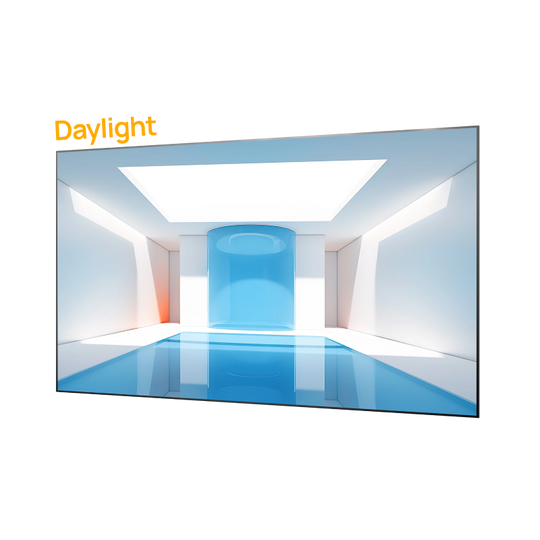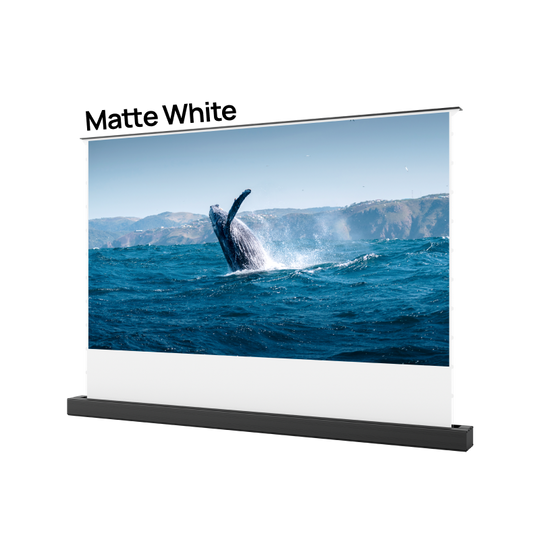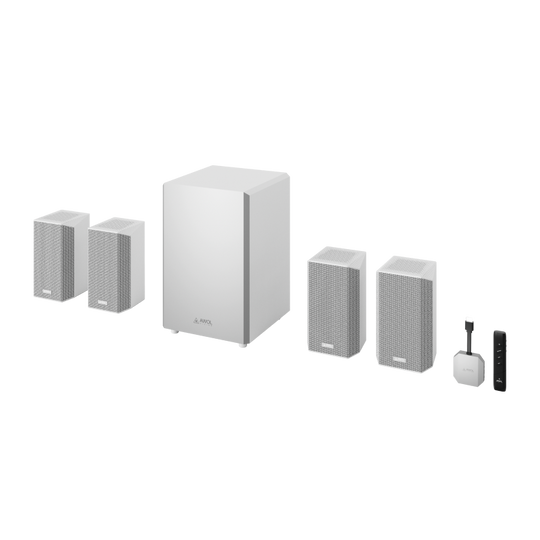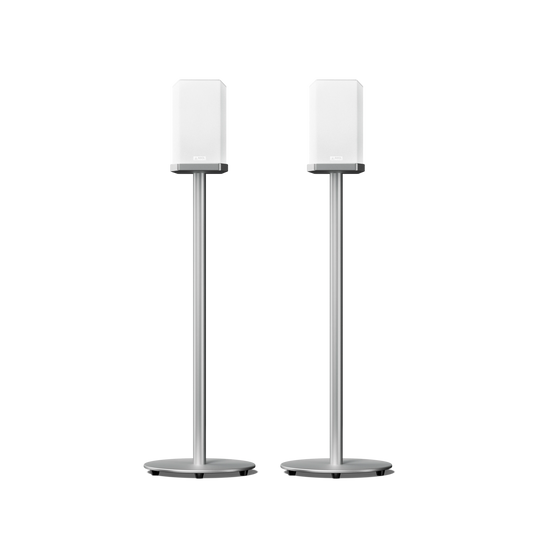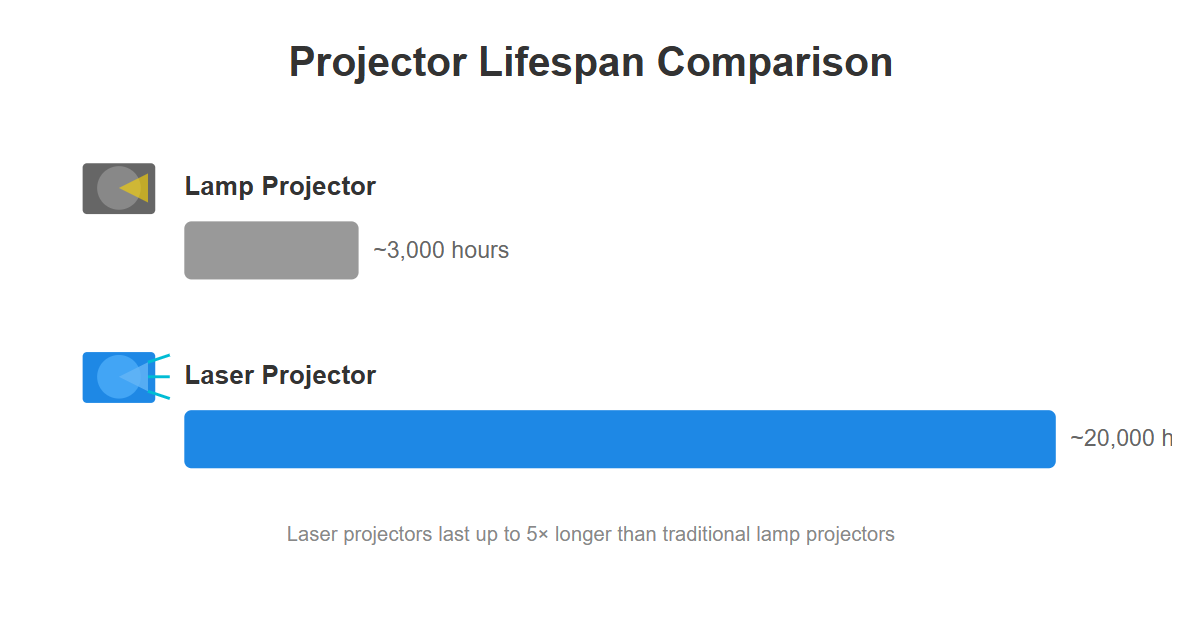So, you’re building your dream home theater. You’ve planned the screen and the seating, but now you’ve hit one of the most critical—and confusing—decisions: the audio. It’s a choice that often boils down to two popular options: a simple, all-in-one soundbar or a powerful, multi-component traditional speaker system.
Making the right choice can feel overwhelming, but it doesn’t have to be. While both can drastically improve your experience, the best system for you isn't universal. It depends on your audio goals, your room, and a factor that most people overlook: the size of your screen. Let’s break down the pros and cons of each to find the perfect fit for your setup.
Key Differentiators at a Glance: Soundbar vs. Speakers
|
Attribute |
Soundbar |
Traditional Speakers |
|
Setup Complexity |
Very Low. Typically plug-and-play with a single cable. |
High. Requires an AV receiver, speaker wiring, and calibration. |
|
Space Required |
Minimal. A single, clean bar fits under your screen. |
Significant. Multiple speakers and a bulky receiver demand more space. |
|
Audio Performance |
Good to Great. A massive upgrade over TV speakers. |
Excellent to Unmatched. Superior fidelity, dynamic range, and power. |
|
Surround Sound |
Simulated. Uses digital processing and wall reflections ("virtual"). |
Authentic. Uses physically placed speakers for a true, discrete sound field. |
|
Upgradability |
Limited. A closed system that cannot be upgraded piece by piece. |
Highly Modular. Components can be upgraded individually over time. |
|
Best For |
Simplicity, smaller spaces, and a convenient, major TV audio upgrade. |
Maximum performance, dedicated home theaters, and long-term flexibility. |
What is a Soundbar?

A soundbar is a long, thin bar that houses multiple speakers within a single enclosure. It's designed to solve a modern problem: as TVs became impossibly thin, the space for quality built-in speakers vanished, resulting in weak, muffled sound. The soundbar is the simple, all-in-one upgrade.
How Soundbars Work
A soundbar is an active system, meaning its amplifiers are built directly into the speaker enclosure, eliminating the need for a separate AV receiver. They come in several common configurations:
- 2.1 or 3.1 Systems: This is the most popular type, pairing the main bar (which has left and right channels, and in a 3.1, a dedicated center channel for dialogue) with a separate wireless subwoofer for bass.
- Hybrid Surround Systems: High-end models create a full 5.1-channel experience by including two additional wireless rear speakers for a more immersive effect.
The Pros: Why People Choose Soundbars
It's easy to see why soundbars are so popular. They are built for convenience and immediate gratification.
- Ease of Use: Most soundbars are plug-and-play. You can often set one up in minutes with a single HDMI cable connected to your TV's eARC port.
- Space-Saving Design: Their minimal footprint and clean aesthetic are perfect for smaller rooms or anyone who dislikes clutter. There are no bulky speaker boxes or messy wires to hide.
- Cost-Effective: While high-end models exist, soundbars generally offer a lower entry-level price for a significant audio upgrade.
The Cons: Where Soundbars Can Fall Short
That simplicity comes with trade-offs, especially when you’re trying to create a truly cinematic experience.
- Limited Soundstage: Because all the speakers are in one narrow bar, the sound can feel confined to the area directly around the screen. This isn't a problem for smaller TVs, but it can become very noticeable with larger displays.
- Compromised Surround Sound: Many soundbars advertise Dolby Atmos or 5.1 surround sound, but they often achieve this "virtual" surround sound by bouncing sound off your walls. It’s a clever trick, but it rarely matches the immersion of having discrete, physical speakers placed around you.
- Weaker Bass: While many soundbars come with a wireless subwoofer, the overall bass impact can be less powerful and nuanced than what a larger, dedicated subwoofer in a component system can produce.
What Are Traditional Speakers?
A traditional speaker system is a multi-component setup with roots in the world of high-fidelity (hi-fi) audio, where the goal is the most accurate sound reproduction possible.
How Traditional Speaker Systems Work
This is a passive system where each specialized component is orchestrated by an AV receiver, which handles power, processing, and inputs. Common configurations include:
- 5.1 Surround: The industry standard, using five speakers (front left, center, right, and two surrounds) and a subwoofer to create an enveloping sound field.
- 7.1 Surround: This adds two more "rear" speakers behind you for a more complete 360-degree experience.
- Dolby Atmos (e.g., 5.1.2): This adds a vertical dimension with height channels, creating a true genuine 3D audio bubble where sound can come from directly above you.
The Pros: Why Audiophiles Choose Speakers
For those who prioritize raw audio performance above all else, a component speaker system is the undisputed king.
- Unmatched Sound Quality: Separate, larger speakers provide superior clarity, dynamic range, and stereo separation. The sound is more detailed, powerful, and lifelike.
- True Immersive Surround Sound: By placing discrete speakers around your room, you create a genuine 3D audio bubble. When a plane flies overhead in a movie, you hear it above you. This is the gold standard for immersion.
- Customization & Upgradeability: You can mix and match speakers from different brands, start with a simple 2.1 stereo setup, and build up to a full 7.2.4 Dolby Atmos system over time.
The Cons: The Trade-Offs for Power
That incredible performance comes at the cost of the very convenience a soundbar provides.
- Complex Setup: Matching components, running speaker wire, and calibrating an AV receiver requires more time, effort, and technical knowledge.
- Takes Up Significant Space: Multiple speaker boxes, stands, and a bulky AV receiver demand a lot of physical real estate.
- Higher Initial Cost: While you can build a system over time, the initial cost for a quality receiver and a set of speakers is typically higher than for a soundbar.
The Deciding Factor Nobody Talks About: Screen Size
Here’s the crucial variable that should guide your decision: the audio needs for a 55-inch TV are fundamentally different from those for a 120-inch projector screen.
As your screen gets bigger, you can experience an "audio-visual disconnect." With a massive, wall-sized image, a narrow sound source from a soundbar can break the illusion. The action you see is huge and expansive, but the sound feels small and stuck in the center. To maintain a truly believable and immersive experience, a large cinematic image requires an equally wide and expansive sound field. The sound needs to match the scale of the vision.
A Third Option: The Best of Both Worlds for Home Theaters

What if you want the immersive, wide soundstage of a component system but the simplicity of a soundbar? This is where the newest category of audio solution comes in: all-in-one wireless surround sound systems.
These systems are engineered to solve the classic "convenience vs. performance" dilemma. They provide discrete, physical speakers for true surround sound but connect to each other wirelessly, eliminating the need for a bulky AV receiver and messy speaker cables.
Why Wireless Surround is Perfect for Projectors
This modern approach is the ideal match for a large-screen projector setup. A system like the AWOL Vision ThunderBeat, for example, is designed specifically to create a massive sound field that complements a 100+ inch image. By pairing wirelessly with a projector that can function as the center channel—thanks to our innovative CenterSync feature—you get a truly integrated and clutter-free cinema experience. For a deep dive into the top options in this category, see our complete guide to the best wireless home theater systems.
How to Choose the Right Sound System for You
Still unsure? Here’s a simple breakdown to help you decide.
- Choose a Soundbar if: You have a smaller screen (under 75 inches), your top priorities are simplicity and budget, and you want a solid, no-fuss upgrade from your TV's built-in speakers.
- Choose Traditional Speakers if: You are a dedicated audiophile, your goal is the absolute best audio performance, and you don’t mind the complexity, cost, and wiring that come with it.
- Choose a Wireless Surround System if: You have a large screen or projector, you want a truly immersive and cinematic experience, but you demand modern convenience and a clean, wire-free aesthetic.
Conclusion
Choosing between a soundbar and speakers isn't about which is "better"—it's about which is better for you. The best audio system is one that complements the scale of your visual experience. By considering your screen size and your tolerance for complexity, you can build a balanced home theater where the sound is just as breathtaking as the picture.
Now that you understand the core differences, your next step is to explore our complete home theater sound system buying guide to see how these options fit into a full setup.
